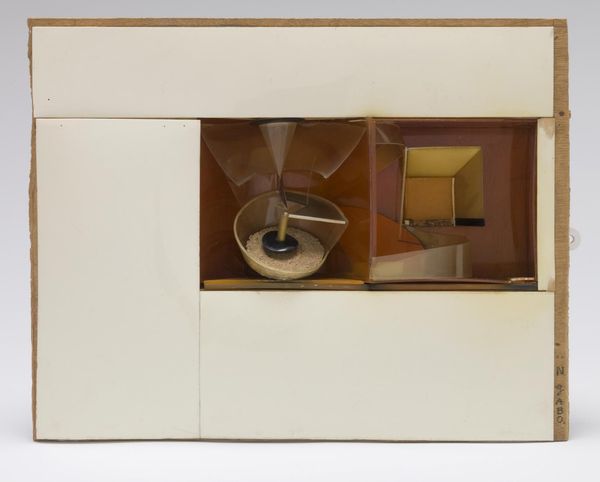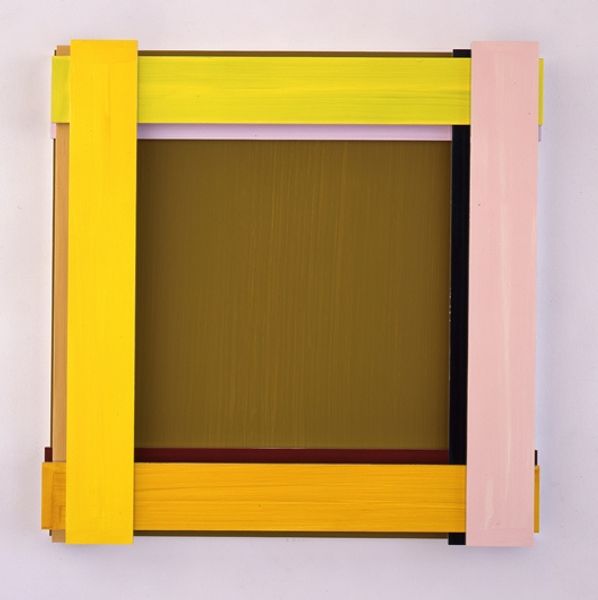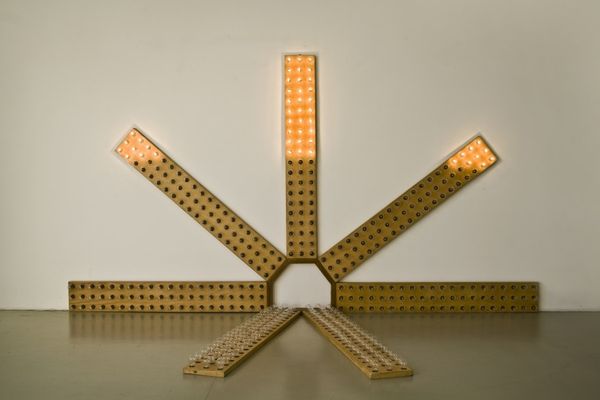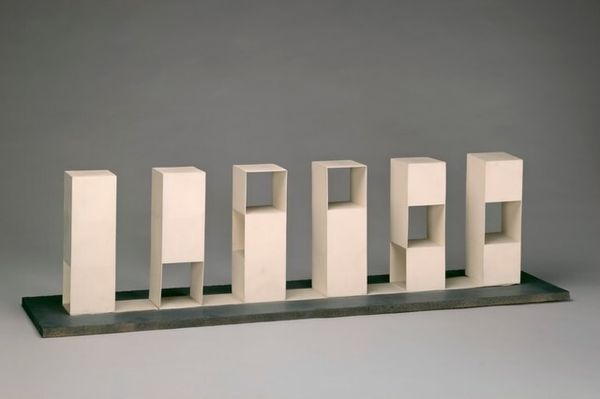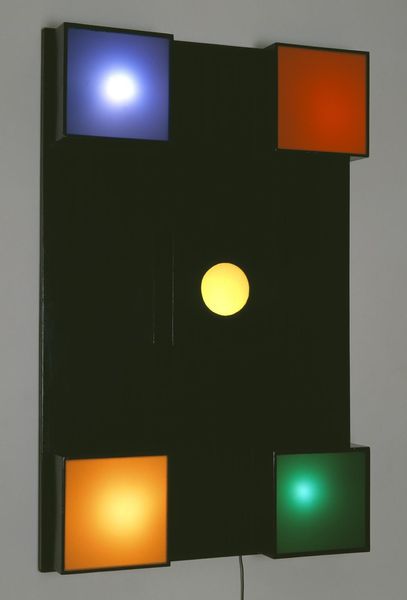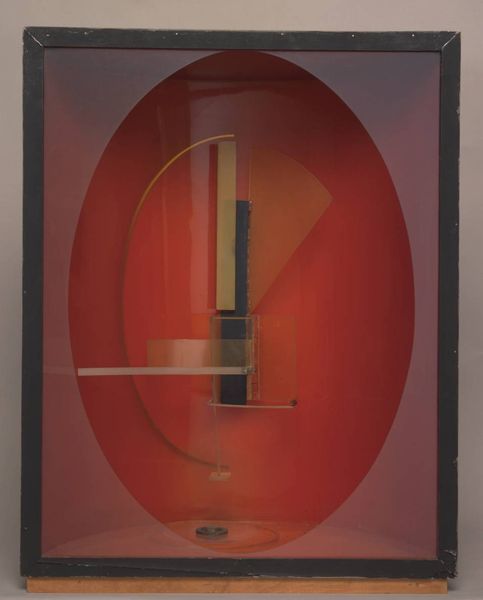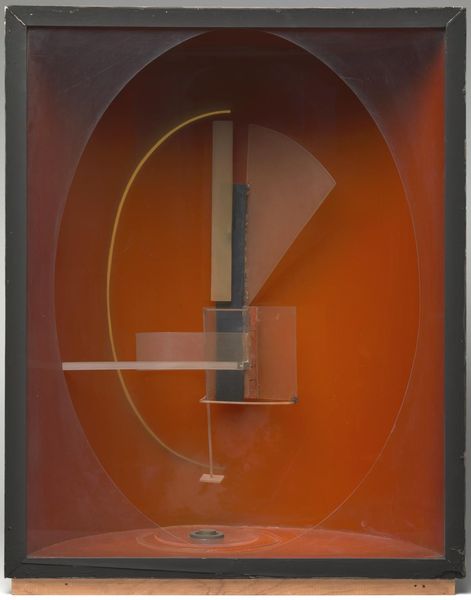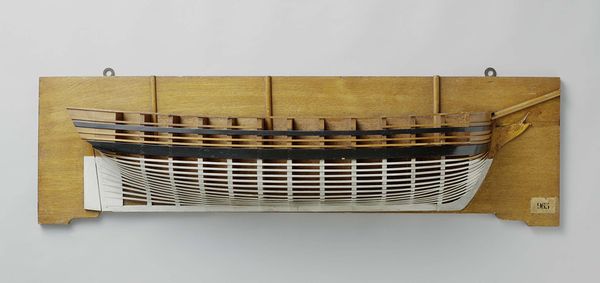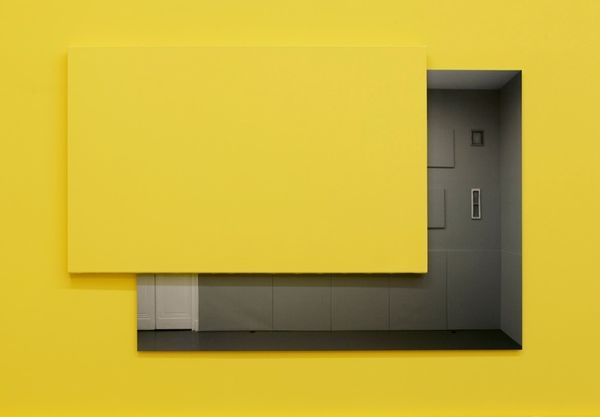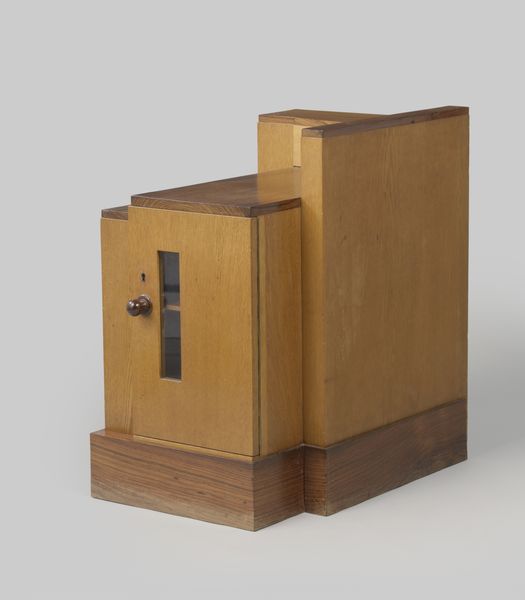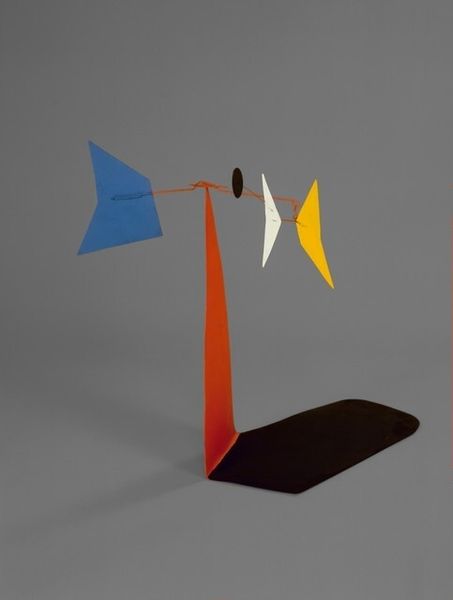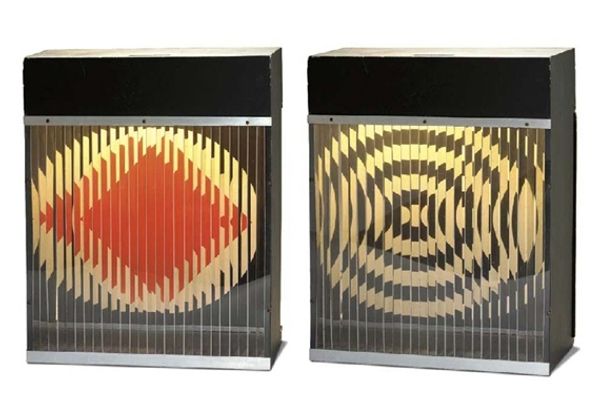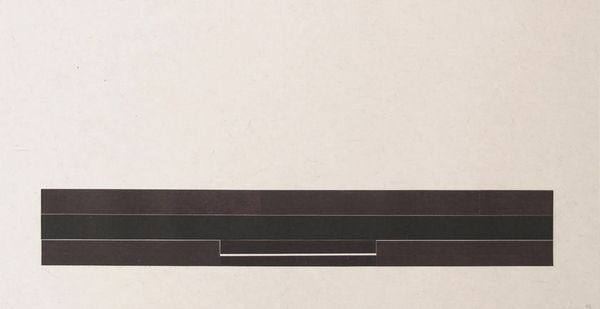
Dimensions: object: 765 x 1330 x 245 mm
Copyright: © Stephen Willats | CC-BY-NC-ND 4.0 DEED, Photo: Tate
Editor: Here we have Stephen Willats' "Visual Automatic No. 5" from the Tate Modern's collection. It's a striking object, almost like a diagram brought to life. What kind of symbols do you see at work here? Curator: The formal geometry speaks to a language of systems, a visual encoding of modern life. Notice the horizontal lines, suggesting both constraint and direction. The "X" form hints at intersection, decision points. Does it evoke a sense of control or of being controlled? Editor: It's a bit ambiguous, I think. Maybe both at once? I like how the yellow contrasts against the blue, but also how the light seems trapped in the small yellow box. Curator: The contrast speaks to different modes of being—the rational versus the intuitive. The light could be suppressed potential or a beacon of hope. Consider how our personal experiences shape these interpretations. Editor: That's fascinating. I'll definitely look at Willats' work differently now, considering the tension between structure and individual expression.
Comments
tatemodern 8 months ago
⋮
http://www.tate.org.uk/art/artworks/willats-visual-automatic-no5-t11784
Join the conversation
Join millions of artists and users on Artera today and experience the ultimate creative platform.
tatemodern 8 months ago
⋮
This work belongs to a series exploring pattern recognition. Visual Field Automatic No.5 features coloured circles which light up in a random sequence determined by hidden environmental sensors. A rotating object in the centre of the structure creates a flickering light effect. The light blinks ten times a second, referencing the frequency of alpha waves in the brain. These electrical signals occur when an individual is awake but not actively focused on a specific task. As viewers naturally attempt to find a meaningful pattern in the coloured circle sequence, the flickering light counteractively encourages relaxation. Gallery label, February 2025
